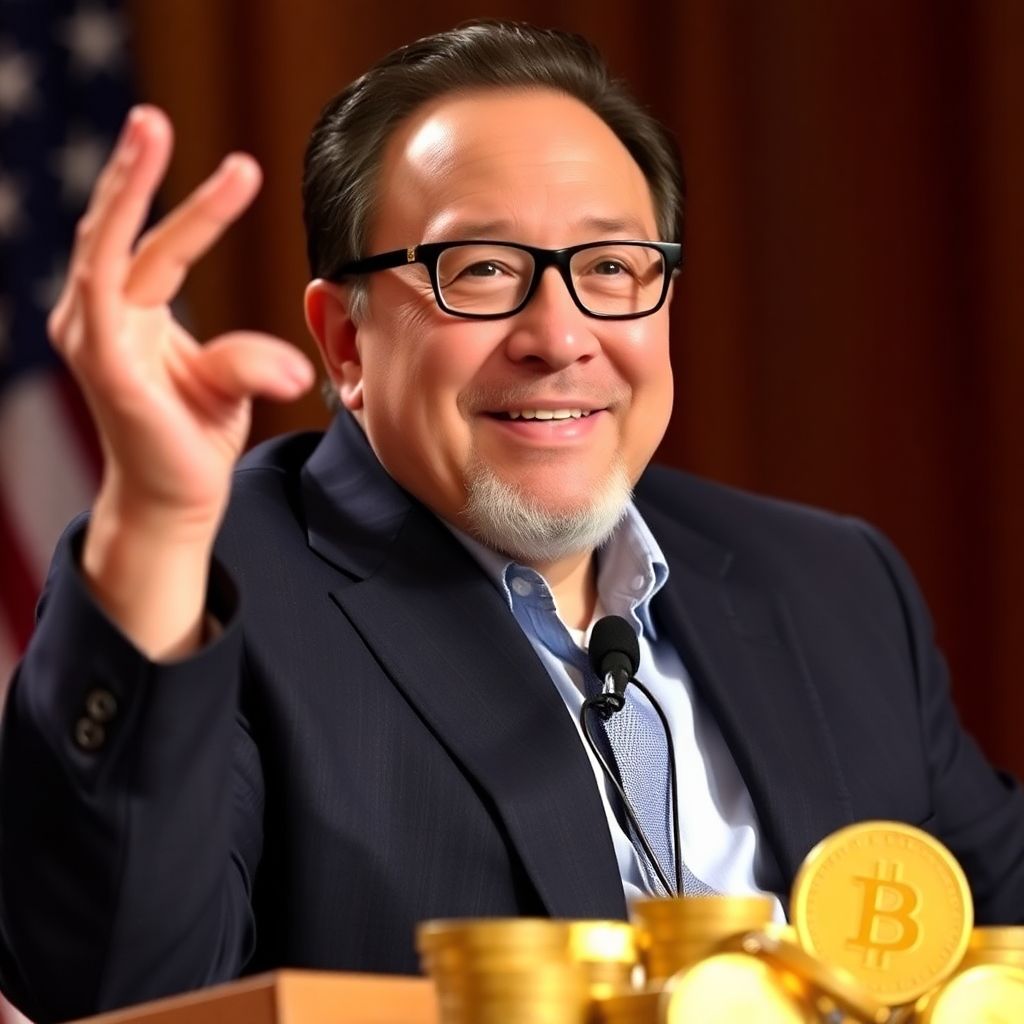Robert Kiyosaki, the renowned author of “Rich Dad Poor Dad,” has once again raised alarms about an imminent financial crisis, claiming that a “massive crash” has already begun. In a strongly worded post dated November 1, he advised individuals to shield their wealth by turning to tangible assets—namely silver, gold, Bitcoin (BTC), and Ethereum (ETH). According to Kiyosaki, traditional savings and fiat currencies are losing their reliability, and only hard assets can offer true protection in times of economic turmoil.
Kiyosaki emphasized that millions of people could see their financial positions wiped out if they remain exposed to what he terms “fake money.” He reiterated a long-standing prediction that Bitcoin could eventually surge to $1 million, while also calling silver an undervalued asset with the potential to triple in value.
His views come at a time when institutional interest in cryptocurrencies is gaining serious momentum. Large-scale investors are pouring funds into crypto-related investment products, including ETFs, boosted by clearer regulatory frameworks. These developments have helped push Bitcoin to new record highs, further fueling the narrative that digital assets are maturing into mainstream stores of value.
In the last 24 hours, Bitcoin’s price edged up by 0.70%, reaching $110,780, while its trading volume surged 35% to $29 billion. Analysts attribute this movement to enhancements in the Lightning Network, which has improved transaction efficiency, and a rise in ETF inflows, indicating growing confidence among institutional players.
Despite his dramatic language, Kiyosaki’s dire warnings are not new. He has issued similar alerts in previous years—2011, 2016, 2020, and more recently in early 2023. However, many of these forecasts failed to materialize with the severity or timing he projected. Critics argue that while his concerns about debt accumulation, inflationary pressure, and disruptive technologies are valid, the exaggerated tone of his messaging diminishes its credibility.
Nonetheless, a growing number of investors are taking precautionary steps. With rising global debt levels and inflation still a pressing issue, more individuals are shifting portions of their portfolios into what they perceive as financial safe havens. Gold and Bitcoin are increasingly seen as strategic hedges against economic instability.
Kiyosaki maintains that fiat currencies are being devalued by central banks through excessive money printing. He contrasts this with the limited supply of assets like Bitcoin and precious metals, which he believes offer a more secure foundation for long-term wealth preservation. Ethereum, with its expanding utility in decentralized finance and smart contracts, also earns a spot on his list of recommended holdings.
However, not all market signals are pointing in the same direction. Even as Bitcoin prices soar, some analysts caution that trading volumes have been inconsistent. Sharp inflows into crypto ETFs can sometimes be followed by equally rapid exits, heightening the risk of volatility. Market observers are keeping a close eye on liquidity and investor behavior, as thin order books and leveraged positions can amplify market swings.
Kiyosaki’s asset allocation strategy is straightforward: reduce exposure to fiat-based savings and bolster holdings in metals and cryptocurrencies. He sees silver as particularly undervalued, predicting a significant price surge. Gold, long considered a traditional safe haven, remains a core part of his defensive portfolio. Digital assets like Bitcoin and Ethereum, meanwhile, serve as modern complements to these time-tested stores of value.
Whether this shift toward hard assets becomes a wide-scale movement depends largely on how global central banks address inflation and manage mounting debt. Tighter monetary policy or further economic shocks could accelerate the flight to safety, giving more weight to Kiyosaki’s warnings.
Adding to the complexity is the evolving regulatory landscape. As governments around the world craft legislation to govern digital assets, investor sentiment is likely to be influenced by how these rules impact accessibility, taxation, and institutional participation. A favorable regulatory climate could further validate crypto as a legitimate component of diversified portfolios.
Moreover, the macroeconomic environment remains fluid. Geopolitical tensions, energy market instability, and slowing global growth are contributing to heightened uncertainty. In such conditions, the appeal of decentralized assets that operate outside the control of any single government or institution continues to grow.
Several financial advisors are beginning to acknowledge that cryptocurrencies can play a strategic role in portfolio diversification. While they caution against overexposure due to the inherent volatility, many agree that a small allocation to digital assets like Bitcoin may serve as an effective hedge against systemic risks.
Retail investors are also awakening to the potential of decentralized finance. Platforms built on Ethereum are providing alternatives to traditional banking services, offering yield opportunities and lending options that bypass legacy intermediaries. This shift reflects changing attitudes toward financial sovereignty and control.
In conclusion, Kiyosaki’s message, though dramatic, resonates with a segment of the investor population that sees danger in the current economic trajectory. While not everyone agrees with his timelines or tone, the underlying themes—protection of purchasing power, distrust in fiat, and the rise of alternative assets—are gaining traction in both retail and institutional circles. As the global financial system faces increasing strain, the debate over where to place wealth for long-term security is far from settled.

